Emerging Crops
 Changes in the marketplace are marked by consumer demand for new local, high quality foods and beverages, and other plant products. Harvest NY's Emerging Crops program explores the potential for new crops -- industrial hemp (C. sativa), hops, small fruits, and more -- in New York State. The growth in craft beverage, local foods, and hemp are all powered by crop production on New York State farms and the Emerging Crops program supports that growth. Our program seeks to maximize the economic potential for current NY-grown crops through education on best management practices and season extension techniques. Harvest NY Emerging Crop Specialists work directly with farmers on production issues by conducting industry-wide research and development projects.
Changes in the marketplace are marked by consumer demand for new local, high quality foods and beverages, and other plant products. Harvest NY's Emerging Crops program explores the potential for new crops -- industrial hemp (C. sativa), hops, small fruits, and more -- in New York State. The growth in craft beverage, local foods, and hemp are all powered by crop production on New York State farms and the Emerging Crops program supports that growth. Our program seeks to maximize the economic potential for current NY-grown crops through education on best management practices and season extension techniques. Harvest NY Emerging Crop Specialists work directly with farmers on production issues by conducting industry-wide research and development projects.EMERGING CROPS CATEGORIES
Vergara's Picks for "Top 5 Cannabis sativa Research Papers for 2025"
Daniela Vergara, Emerging Crops Specialist
Harvest New York
As presented at the 2025 Cornell High-Cannabinoid Hemp Cannabis sativa Field Day, Dr. Daniela Vergara shares her "Top 5 Research Papers for 2025."
NYS Cannabis sativa L. Guidebook
Daniela Vergara, Emerging Crops Specialist
Harvest New York
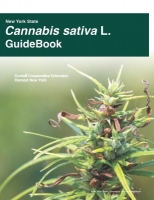
The "NYS Cannabis sativa L Guidebook" is an essential resource for cultivators in New York State, offering comprehensive guidelines on regulatory compliance and best practices in cultivation. It provides instructions on Good Manufacturing Practices (GMP) to ensure product quality and safety. The guidebook also includes Integrated Pest Management (IPM) strategies, featuring preventative measures, recommended products, and reactive protocols to manage pest issues effectively. To assist with diligent record-keeping, the guidebook offers product tracking sheets, IPM scouting logs, and forms for tracking product applications, helping cultivators streamline their tasks and maintain compliance.
This guidebook not only provides actionable guidelines but also facilitates data collection in this newly established industry. By using the included forms and logs, cultivators can contribute valuable data to help improve industry standards and practices.
Cannabis sativa L. Manual de Producción del Estado de Nueva York
Daniela Vergara, Emerging Crops Specialist
Harvest New York
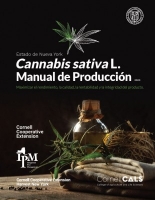
El Manual de Producción de Cannabis sativa L. del Estado de Nueva York tiene como objetivo proporcionar los dates y hallazgos actuales sobre el cultivo sostenible de todas las formas de C. sativa, tanto de cáñamo como de uso médico y recreativo a cultivadores y miembros de la industria del Cannabis. El fin del manual es que sus usuarios puedan lograr un rendimiento de alta calidad, rentable y conforme a las regulaciones. La producción de C. sativa se utiliza para el desarrollo de productos cannabinoides como lo son productos terapéuticos, o productos a base de cáñamo como la fibra y el grano. A medida que aumente la investigación y el conocimiento sobre el C. sativa, este manual se actualizará para incluir nueva información. Las perspectivas de los autores del manual están dirigidas en gran medida, pero no exclusivamente, a la industria en el Estado de Nueva York.
El manual también incluye información sobre el entorno regulatorio de la planta de C. sativa, una descripción de su cultivo, información sobre pruebas y clasificación, así como consejos sobre cómo producir un cultivo que cumpla con los estándares internacionales ambientales y laborales. Nuestro objetivo es ayudar a los cultivadores a maximizar el rendimiento, la calidad, la rentabilidad y la integridad del producto mientras se mantiene el cumplimiento regulatorio.
NYS Cannabis sativa L. Production Manual
Daniela Vergara, Emerging Crops Specialist
Harvest New York

The New York State Cannabis sativa L. Production Manual is intended to provide current data and findings about sustainable hemp cultivation to growers and members of the Cannabis industry to achieve a high-quality, profitable, and compliant yield. Cannabis sativa yields are used for the development of hemp-based cannabinoid products, fiber, grain, and medicine. As research and knowledge about hemp and, in general, the C. sativa plant increases, this manual will be updated to include new information. The perspectives of the manual authors are largely, but not exclusively, directed to the industry in New York State.
The manual also includes information about the regulatory environment around hemp in New York and the United States, a description of C. sativa cultivation, information about testing and grading, as well as tips on how to produce a crop that meets international environmental and labor standards. Our objective is to help growers maximize yield, quality, profitability, and product integrity while maintaining compliance.
Propagating Strawberry Plants Through Runners
Anya Stansell, WNY Small Fruit Specialist
Harvest New York
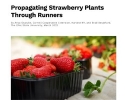
The production of strawberry plants is challenging due to the rigorous sanitation needs that must be met, especially in field propagation settings, but also in greenhouse settings. To add to that, growers in New York may find it more difficult to obtain their preferred strawberry varieties in the coming years, as fewer nurseries are propagating strawberries. The solution: strawberry plug plants propagated from runners in a controlled environment such as a greenhouse or high tunnel. Plug production of rarer varieties that do well in New York State will fetch a higher price than dormant bare-root plants due to the higher cost of production and lower availability in the Northeast, especially if plants are available in August. This article only discusses production and marketing potential of plug plants because successful field production of bare-root strawberries is very difficult to achieve without the use of highly restricted soil fumigants.
Pawpaws in NY: A Guide on How to Grow and Care for Pawpaws
Anya Stansell, WNY Small Fruit Specialist
Harvest New York
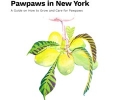
The pawpaw (Asimina triloba) is a fruiting tree native to the eastern United States, growing from the Florida lowlands up to the Southern Tier in New York. It is believed that the pawpaw's range is as large as it is because Indigenous Peoples cultivated this tree. Pawpaws have great value as a food crop. They contain 7 of the 9 essential amino acids and are an excellent source of iron and manganese.
The pawpaw patch in Lansing has attracted much interest due to the large, flavorful fruits and strong trees that grow there. Pawpaw trees grow up to about 35 feet tall. Pawpaws need around 5 to 6 years to begin growing fruits and flowers. Their maroon-colored flowers open between March and May, and fruit become ripe from August through October. Compared to pawpaws that grow in the wild in the Midwest, some of the fruits of the Lansing pawpaws can be 2 - 5 times larger.
This guide, written by Anya Osatuke, Berry Specialist with CCE Harvest NY, Sean Dembrosky of Edible Acres in Trumansburg, NY, and Marvin Pritts of Cornell University, shares practical information on how to grow and care for pawpaws, based on conversations with growers and researchers in New York State and the information provided by the references cited.
Cornell Recommendations for U-Pick Operational Changes due to COVID-19
Esther Kibbe, WNY Berry Specialist
Harvest New York
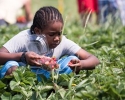
Many growers who allow customers to come and pick their own vegetables and fruits have been concerned about how that will work in this time of social distancing and closed businesses. At this time, the state has not prohibited U-Pick or on-farm sales. Cornell has just released a document outlining best practices and ideas for growers who choose to allow the public on their farms.
Managing Blueberry Stem Gall Wasp in New York
Esther Kibbe, WNY Berry Specialist
Harvest New York
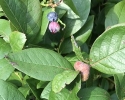
In the past few months, several growers across WNY have observed stem galls in their blueberry fields. While somewhat uncommon, the blueberry stem gall wasp (Hemadas nubilipennis) is an insect native to Eastern North America. It is found in both low and high bush blueberry plants in the wild and in cultivated fields. In some regions and varieties the wasp can multiply to high levels, causing economic injury in commercial fields.
Insuring Malting Barley in New York Factsheet (2019)
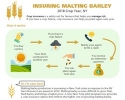
Are you a malting barley grower considering crop insurance? This factsheet provides on the crop insurance policies, where in New York you can insure malting barley, and important deadlines to keep in mind.
Edible Hemp Foliar Sampling Project 2018
Judson Reid, Extension Vegetable Specialist, Team Leader
Harvest New York
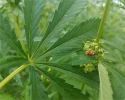
Hemp, a multi-use crop that has been cultivated for centuries, is increasingly cultivated in New York. 'Industrial hemp' is a non-intoxicant version of Cannabis sativa with potential use as fiber, grain or processed consumer products. Hemp is a controlled substance, regulated by the US Drug Enforcement Agency. New York is one of the states with a sanctioned program to study growth, cultivation and marketing of the crop.
In 2018 CCE worked with two farms in Central and Northern New York to begin to understand nutrient dynamics in the production of edible hemp. The end product may be a microgreen for salad style consumption, juice or smoothies; or formulated into other edible products. Although we initially began to work with microgreens, farmers have found interest in edible portions of later stages of crop growth too. In both situations the crop was grown inside a greenhouse; one in mineral soil, the other in potting soil.
Malting Barley: Keys to Successful Production in New York State
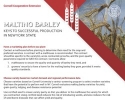
This comprehensive guide, developed by College of Agriculture and Life Sciences at Cornell University faculty and Cornell Cooperative Extension Specialists, provides 10 essential malting barley production recommendations for growers in New York State.
Economics of Malting Barley Production
Cheryl Bilinski, Local Food Systems Specialist, Farm to School Lead
Harvest New York
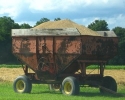
John Hanchar of CCE Northwest NY Dairy, Livestock and Field Crops team worked with specialists, producers and others in the malting barley industry to develop enterprise budgets under various conditions -- spring vs. winter varieties, varying tillage practices, standard vs. intensive management, and others. Enterprise budgets comprise: value of production, income; costs of production (variable and fixed inputs); and returns, for example, return above variable costs, and return above total costs.
Malting Barley Alternative Markets
Cheryl Bilinski, Local Food Systems Specialist, Farm to School Lead
Harvest New York
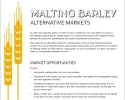
What will you do if the malting barley you've grown does not meet the specs of your maltster? Plan ahead for an alternative market for rejected barley. This can help minimize economic losses if the crop is rejected based on grain quality. Using barley as an animal feed as a portion of finishing rations for beef cattle is a good option as well as including it in a dairy cow ration -- barley is a comparable substitute for corn.
This flyer will provide information about market opportunities for rejected barley and potential buyers.
Cornell Malting Barley Resources -- Breeding Program, Variety Trials, Research
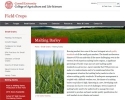
Cornell University has started a malting barley breeding program, is conducting variety trials across the state, and is engaged in research to reduce disease and mycotoxin contamination.
